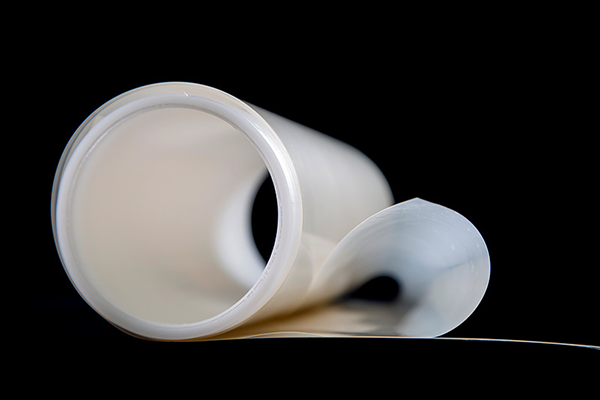Product Introduction of Fuel Cell Membranes:
By incorporating ePTFE (expanded polytetrafluoroethylene) microporous reinforced material into the traditional proton exchange membrane, we achieve high strength, excellent conductivity, and low ion permeability. ProtoneX's PEM for hydrogen fuel cell membranes has been demonstrated in both laboratory settings and the market to be comparable to similar products from Gore.
Product Advantages of Battery Exchange Membrane:
1. The Polymer electrolyte membrane we produce has low gas permeability, which reduces gas cross leakage and improves battery safety.
2. The Battery exchange membrane we produce has high electrochemical stability and can be used for a long time without damage.
3. The Battery exchange membrane we produce does not contain toxic and harmful substances, meets environmental protection requirements, and is safe to use.
Thickness and Basis Weight Properties:
| Membrane Type | Thickness(microns)(um) | Weight(g/m²) |
| PXHY-15-T01 | 15 | 29.5 |
Physical and Other Properties:
| Physical and Other Properties | Typical Value | Test Method | |
| Tensile Test (23°C,50%RH) | MD | TD | |
| Tensile Strength(MPa) | ≥30 | GB/T 20042.3-2022 | |
| Tensile Modulu(MPa) | ≥350 | ≥350 | GB/T 20042.3-2022 |
| Elongation at break(%) | ≥18O | ≥180 | GB/T 20042.3-2022 |
| Specific Gravity | 1.97 | — | |
| Other Properties | Index Parameters | Test Method | |
| Conductivity(S/cm) | ≥0.110 | GB/T 20042.3-2022 | |
| Hydrogen Crossover | <4.50x10 -8 | GB/T 20042.3-2022 | |
| [cm3·cm/(cm2·s·0.1MPa)] | |||
| Hydrogen Crossover Current (mA/cm2) | <2.0 | ||
Hydrolytic Properties of Polymer electrolyte membrane:
| Hydrolytic Properties | Typical Value | Test Method | |
| Water Content(%) | 10.0±3.0 | GB/T 20042.3-2022 | |
| Water Uptake(%) | 50.0±5.0 | GB/T 20042.3-2022 | |
| Thickness Swelling Rate at 23°C, 50% RH (% increase) | |||
| 23℃ soaked from 50% RH | W≤15 | GB/T 20042.3-2022 | |
| 100 ℃ soked from 50% RH | ≤40 | GB/T 20042.3-2022 | |
| Linear Expansion at 23℃, 50% RH (% increase) | |||
| MD | TD | ||
| 23℃ soaked from 50% RH | ≤4 | ≤5 | GB/T 20042.3-2022 |
| 100℃ soaked from 50% RH | ≤7 | ≤7 | GB/T 20042.3-2022 |

Notes:
1. Gas purity: Use high-purity hydrogen and oxygen to avoid corrosion of Polymer electrolyte membranes and performance degradation caused by impurities.
2. Startup and shutdown procedures: Follow the correct startup and shutdown procedures to avoid the impact of rapid temperature and pressure changes on the membrane.
3. Chemical environment: Avoid contact with chemicals such as strong acids, strong bases and organic solvents, which may corrode the Fuel Cell Membranes.
Packaging:
Moisture-proof packaging: Use moisture-proof bags or vacuum packaging to seal the Fuel Cell Membranes in a moisture-proof bag to prevent it from absorbing moisture.
Protective materials: Put protective film or paper on both sides of the Fuel Cell Membranes to prevent scratches on the membrane surface.
Laminated packaging: Put the Battery exchange membrane flat on a hard pallet and fix it with fixing tape to prevent the membrane from moving during transportation.
Outer packaging: Use sturdy cartons or wooden boxes as outer packaging for additional protection.